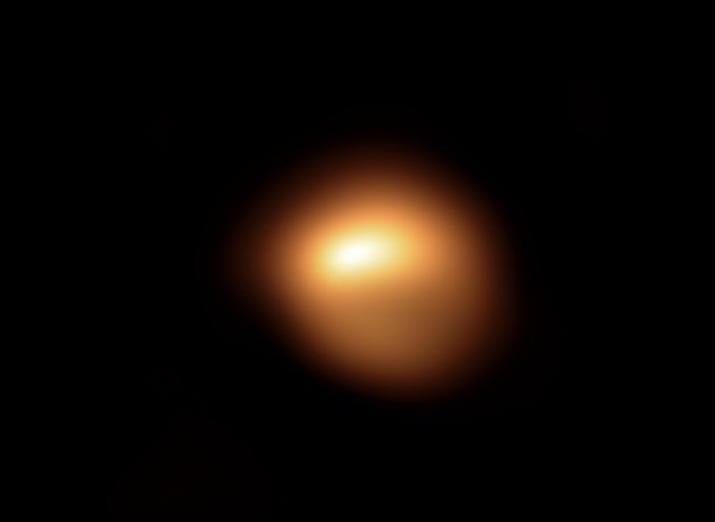Mystery over Betelgeuse star that inexplicably started dimming has been solved

Your support helps us to tell the story
From reproductive rights to climate change to Big Tech, The Independent is on the ground when the story is developing. Whether it's investigating the financials of Elon Musk's pro-Trump PAC or producing our latest documentary, 'The A Word', which shines a light on the American women fighting for reproductive rights, we know how important it is to parse out the facts from the messaging.
At such a critical moment in US history, we need reporters on the ground. Your donation allows us to keep sending journalists to speak to both sides of the story.
The Independent is trusted by Americans across the entire political spectrum. And unlike many other quality news outlets, we choose not to lock Americans out of our reporting and analysis with paywalls. We believe quality journalism should be available to everyone, paid for by those who can afford it.
Your support makes all the difference.Scientists say they have finally solved the mystery of why a star appeared to be suddenly and inexplicably dimming.
The curious case began in late 2019, when astronomers noticed that Betelgeuse – one of the brightest stars in the night sky – had suddenly become darker. Researchers struggled to find an explanation for the “Great Dimming”, which was so dramatic that it could be seen with the naked eye.
Researchers continued to watch the star throughout what they called the “Great Dimming” and noticed that the changes in its brightness were happening rapidly. “For once, we were seeing the appearance of a star changing in real time on a scale of weeks,” said astronomer Miguel Montargès, who led the work that used the European Southern Observatory’s Very Large Telescope.
A few months later, in April 2020, the dimming had come to an end, and the star was back to its usual brightness. But researchers still were unable to explain what might have caused such a dramatic change.
The dimming how now been revealed to be the result of a veil of dust in front of the star, scientists write in an article published in Nature. That happened because the temperature dropped on the star’s surface.
That cooling meant that the gas on Betelgeuse’s surface condensed into solid dust. That gas had been ejected from the star at some point earlier on, as part of regular bubbles that are formed and swell within the star itself.
“We have directly witnessed the formation of so-called stardust,” said Montargès. That is the same kind of stardust that helped form planets, including our own, and life just like us.
In the wake of the Great Dimming, some researchers had speculated that the drop in brightness could be an indication the star was about to die and explode as a supernova. It would be the first time such an event could be seen in our own galaxy for years – and so astronomers are not exactly sure what it would look like from Earth.
The new research rules out that theory, as well as giving new indications of how the dust was able to form and cover up Betelgeuse so quickly. It also shows how the lights in our night sky can change as a result of processes that are still mysterious to us, the scientists say.
“Looking up at the stars at night, these tiny, twinkling dots of light seem perpetual. The dimming of Betelgeuse breaks this illusion,” said Emily Cannon, a researcher from KU Leuven who also worked on the study, in a statement.
Join our commenting forum
Join thought-provoking conversations, follow other Independent readers and see their replies
Comments